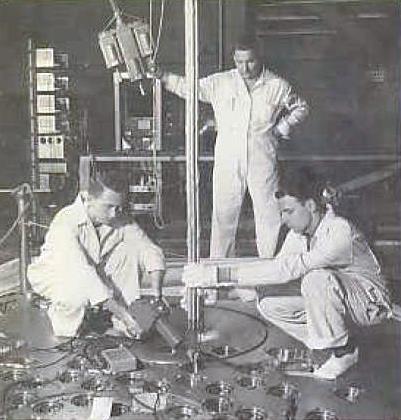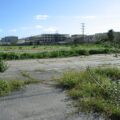
Exactly 50 years ago today, Atomics International was in the second-to-last day of the SRE meltdown that began on July 13, 1959. The amount of radiation released during this time, and after, was 260 to 459 times the same amount of radionuclides that escaped the more infamous Three Mile Island meltdown in Pennsylvania twenty years later, according to various sources including a comprehensive analysis of EnviroReporter.com.
How could this SRE meltdown be worse than the larger meltdown at Three Mile Island? It’s because the SRE wasn’t built with the kind of containment domes you see on modern reactors as shown in this 29-page Sodium Reactor Experiment promotional brochure from 1957. Indeed, this “experimental” reactor wasn’t constructed in a manner that took into account the possibility of a disaster where the uranium fuel rods overheat, melt, are impossible to control, and highly fissionable gases are released into the environment in order to relieve pressure on the reactor core lest it explode like Chernobyl’s did in 1986.
You can see on page 5 of the brochure that the SRE was built with a tilt-up, concrete slab method of construction. This big box-like structure formed the “High Bay” of the reactor and when radiation was inadvertently leaked from the core, as we describe in our LA Weekly story “Wrinkles in Runkle Canyon,” this relatively flimsy structure leaked the radiation out and contaminated the entire facility.
And, as we note in the article, this meltdown and the subsequent leakage and venting of extremely dangerous nuclear core gases into the air has impacted Southern California ever since.
This amazing SRE promotional brochure was donated by Denise Duffield, Associate Director of the Nobel Peace Prize-winning group Physicians for Social Responsibility-Los Angeles (PSR-LA), to the Aerospace Museum of Cancer (ACME-LA) in Chatsworth, California, in Spring 2009. The brochure was part of a larger donation of PSR-LA’s nuclear-related library to the museum and community center in order that many rare and valuable books, brochures and Cold War Era-related material could be accessible to the public.
24 Years of Award-Winning SSFL/Rocketdyne Reporting
June 1998 – June 2022












Recent Comments